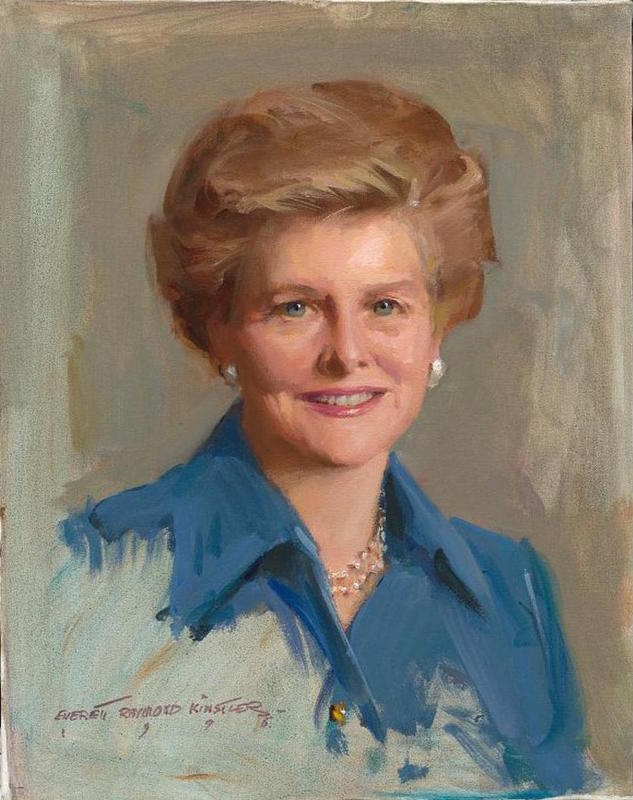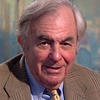More about Betty Ford
- All
- Info
- Shop

Contributor
No single portrait of Betty Ford, even one by Everett Kinstler, could encompass her courage, honesty, cheekiness, and charisma.
Betty Ford was, in a word, badass. She single-handedly changed America’s views on taboo subjects like breast cancer and openly talked about things like sex, abortion, homosexuality, women’s rights, and, most famously, drug and alcohol dependence. She was unapologetically herself throughout her entire life, especially while in the White House, and though many times it made her the subject of much scrutiny, she did not change. So, we’re huge Betty Ford fans.
Betty was born Elizabeth Anne Bloomer in Chicago in 1918. When Betty was two the family moved from Chicago to Michigan, where they lived a comfortable, middle-class life. They continued to do so thanks to the hard work of Betty’s mother after her father died of asphyxiation while working on a car in a closed garage. When Betty was 20 she headed to New York, determined to become a first rate dancer under the tutelage of Martha Graham, the mother of modern dance. She never did become a famous dancer because her mother convinced her to come back to Michigan, but she did teach dance to disabled and underprivileged children. She also married a furniture dealer by the name of William C. Warren, whom she divorced a few years later. All in all going back to Michigan wasn’t the best idea. That is, until she met a cute lawyer named Gerald Ford. They were married just before Gerald was elected to the House of Representatives in 1948. They had all four of their children in Washington, DC, and all seemed to be well. But meanwhile, Betty began to suffer mentally. She said “from the outside, [their] life looked like a Norman Rockwell illustration,” but by 1962 “[she]’d lost [her] feeling of self-worth.” She began seeing a psychiatrist twice a week, something she wasn’t afraid to admit to the public. Then all of a sudden, her life became complicated by her husband’s appointment to Vice President. Less than a year later, it became even more complicated. Gerald became President of the United States when Nixon resigned after the Watergate scandal. In a "60 Minutes" episode, Betty explained her reaction to her husband’s presidency. She said “If we have to go to the White House, okay, I will go. But I am going as myself. It’s too late to change my pattern and if they don’t like it then they’ll just have to throw me out.” She became one of the most popular First Ladies of all time, reaching an approval rating of 75 percent.
This overwhelming approval did not come without a fair share of criticism though. She was criticized for her openness about her malignant breast cancer diagnosis and subsequent mastectomy, as well as for her thorough support of the Equal Right Amendment and a woman’s right to make her own decisions about her own body, which unfortunately was ground-breaking at the time. Most importantly, after her own struggle with drug and alcohol addiction, she opened the Betty Ford Center to help people, especially women, deal with addiction. She was a woman who led by example. Unfortunately, that example was an addiction to prescription pain killers, but everyone loves an underdog story. And this underdog ended up being "TIME" magazine's Woman of the Year in 1975, and won both the Presidential Medal of Freedom and the Congressional Gold Medal. Safe to say I’m on Team Betty Ford.
Sources
- "Betty Ford." Biography. 2018. Accessed July 30, 2018.
- "Betty Ford | National Portrait Gallery." National Portrait Gallery. Accessed July 30, 2018. http://npg.si.edu/object/npg_NPG.97.155.
- Nemy, Enid. "Betty Ford, Forthright And Inspirational First Lady, Dies At 93." Nytimes.com. N.p., 2011. Web. 30 July 2018.
- Pelley, Scott. Remembering Former First Lady Betty Ford. CBS, 2011. video.












